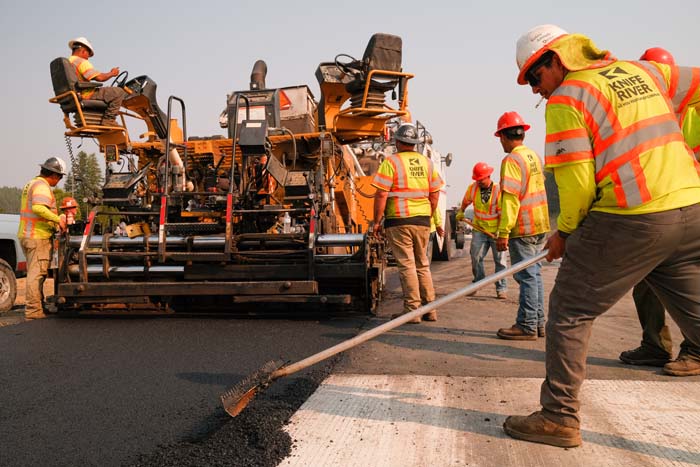Milchwagon Haus: A return trip to Dory’s happy place
Published 9:39 am Monday, September 2, 2013
Last week I laid the ground, so to speak, to tell you about one day that I spent up on the hill at the old Hofmann homestead.
My Lovan relatives lived there and ran the old dairy.
It was a summer day and my mother and I had walked up there to visit Aunt Rosie and my younger cousin, Billy.
It must have been in the morning hours, for Aunt Rosie was doing the family wash and hanging it out on the line stretched between poles in the “back-front yard.”
I say “back-front yard” since the so-called front-front yard was the steep downslope of the hill right in front of the house, an impossible place to put a clothesline, whereas the slope of the hill allowed access to the house and yard via the second story, thus giving it a back-front porch and yard as well.
The front-front porch did have a cement slab tucked under the overhang upper porch, though, so it could be used for doing various chores. I can’t say whether Aunt Rosie was on this particular front porch using a scrub board in a washtub or if the family had progressed to the more modern usage of a wringer washing machine, but I’m sure she was familiar with both.
At least it would have been on the front-front porch that she did summertime laundry, for at the time there was no laundry room as such in the house. To this I can testify because it did not exist when our family lived there in the early 1930s.
Anyway, to get on with my story, as the two women worked and visited, Billy and I were left to our own devices to entertain ourselves.
I probably should remind young folks that in those days we didn’t have television, computers, laptops, texting, smartphones, or anything else electronic, so we had to depend on imaginative play for entertainment at home.
We even talked with each other, face to face. We could run all over the hill looking for wildflowers, play in the run-off creek if it still held spring water, climb trees, play in the dirt with cars and trucks, make mud pies and let them dry in the sun, play with Spot (or was it Tip), their dog, or pet the new kittens, gather pine cones or carry in kindling for the wood-burner kitchen range, feed rabbits or chickens, play in the barn where we could put our heads in the stanchions and pretend we were cows, or play in the hay, check the garden for ripening vegetables or the trees for fruit.
Oh, my goodness. The list goes on forever and I haven’t room to write all the wonderful things we could do.
But, this was the day we decided to be milkmen.
That meant playing on the milk-wagon stored in a shed near the house as the hill sloped down to the family road between the house and barn, the shed I called the Milchwagon Haus for the Swiss heritage.
How many children have had the opportunity to play on a milk wagon and be as close to the real thing as we were that day?
In my memory the structure still stands and in it is stored the engineless vehicle, an enclosed wagon with an open door on each side and an open window across the front where reins from the horse were pulled through for the driver.
I am about 6 years old and my cousin, Billy, is 9 months younger. He lives in the house on the hill, and I am unknowingly awaiting my turn to live there as I go up from town to play.
We decide to become milkmen and gather glass bottles from a shed close by to put in a wire cage that is in the wagon. We cart them through the back door of the shed and step into the wagon from the inside stairs.
Billy, who knows how these things are done, pretends to back a horse into the shed between the traces and throw the imaginary reins up to me. Then he climbs aboard the wagon and takes over the reins. After all, his folks run the dairy and I am a girl as well as a visitor, so he should do the driving.
However, I am 9 months older and can use that to my advantage if I choose to do so.
Ready to go on the delivery rounds, we stand at the front of the wagon and cluck to our invisible horse (I wonder if it had a name) harnessed into place, awaiting our command with the flick of the reins.
Down the hill our imagination takes us until we have made our rounds, stopping here and there to take a glass bottle or two of imaginary milk and leave it at the door of the milk house, letting the site serve as various neighborhood houses, running both ways each time.
Then we pretend to climb back up the hill at a slower rate, backing the wagon into the shed with careful calculation. We release the horse and turn it out to pasture on the hillside and return to the wagon. It is bare of bottles in the wire cage, so we climb out of the wagon and go up the inside steps of the shed, exiting the door onto the sidewalk near the milk-house where the separating is done.
Our bottles stand in wait for a thorough cleansing, a refilling, capped by round cardboard lids, and another delivery run if we are in the mood to do the job, or if another adventure awaits us elsewhere, or the time has run short for my mother’s visit.
I loved the clank of the glass bottles against each other and the white-sided specially built milk wagon. It had been a fun ride in realistic if imaginary terms. I just wish I had a photo of that milk wagon on which we played.
No, the milk wagon didn’t actually roll down the hill and we were never in any danger, so maybe the story is disappointing to you, but we played on a real milk wagon with real glass milk bottles, and knew how the milk got into those bottles and how folks in their homes received them. Surely that in itself is worthy of oldsters remembering and youngsters to know about.
The horse and wagon have been gone for many years, and now, so is its housing, but the Milchwagon Haus stands in my memory as once it did with its unpainted and weathered wooden board sides, its round pole beams, its back door with inside steps following the upward slope of the hill.
The front end of the structure stands open awaiting the old horse to pull the wagon to town, folks waiting for their daily bottle of milk, cream rising to the neck of the bottle, for their morning coffee.
I see my Aunt Rosie with arms outstretched to pin a piece of wash to the line. Her generous frame is covered by a large bibbed apron and a clothespin is held between her lips as she hangs a pair of overalls, which indicates that the last batch has been accomplished. Now there will be galvanized tubs of water to turn over onto the slope of the hill and then stored away awaiting another laundry day or Saturday night baths.
Nearby my mom, in a sleeveless cotton print housedress, hands her sister another clothespin as they continue their visit.
She waits to help with emptying the tubs; then I know it will soon be time for us to head back down the hill for home. But not without a big freshly baked sugar cookie and, maybe, a few fresh eggs.
Yes, they tore down the old dilapidated milk-house shed to make room for necessary progress, and all three of those with whom I have spent the day are now deceased, but I possess the scene in my memory.
It belongs to me!
It’s mine to keep.






